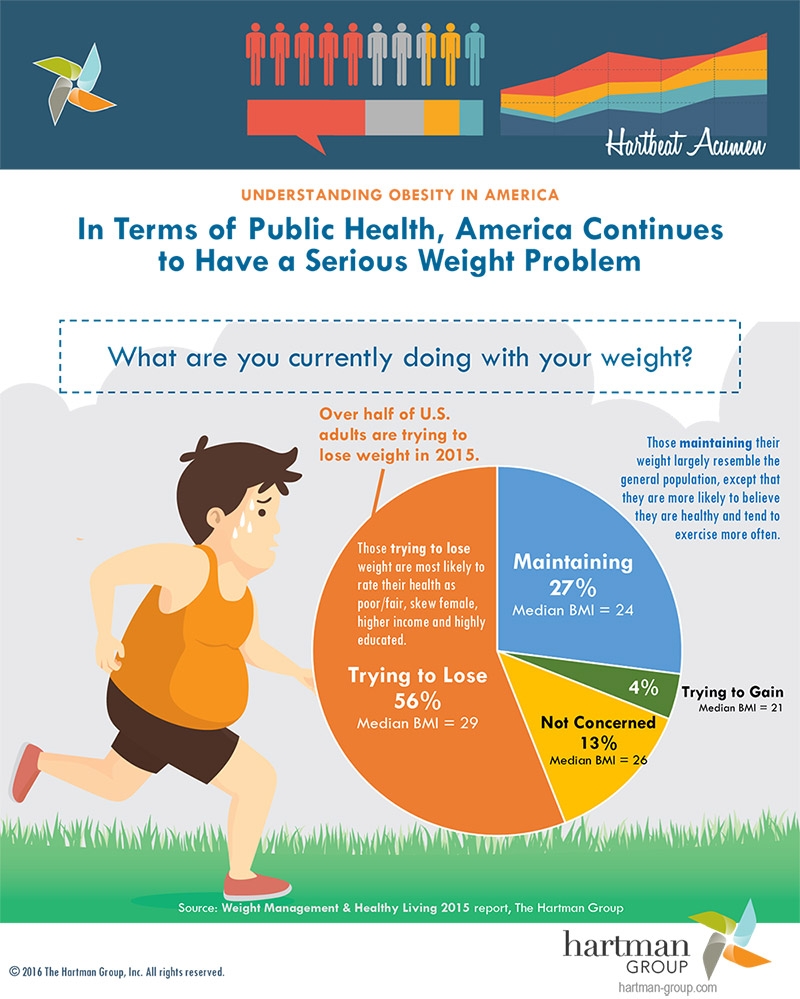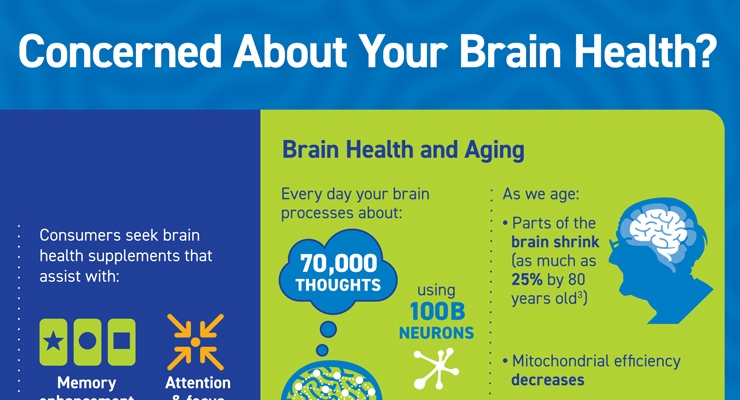Infographics
Consumers Connecting the Dots Between Eating Habits & Health
Americans increasingly see themselves primarily responsible for their own weight.

Most Americans continue to be overweight, with a substantial minority being obese (32%) or extremely obese by CDC standards. Yet consumers’ views on being overweight are changing. The latest report from consumer trends experts The Hartman Group, Weight Management & Healthy Living 2015, found there is greater acceptance of being overweight as a society than in the 1950s, when modern dieting culture began. Since most American adults are overweight today (63%), being “heavy” is now the social norm and much less stigmatized than in the past. The new enemy for consumers is obesity, not simply being overweight.
“Over the past 10 years, overweight and/or obese Americans have come to accept their weight status as defined by the CDC,” said Laurie Demeritt, CEO of The Hartman Group. “This is a huge shift in self-awareness and in willingness to accept stigmatized terms like ‘obese’ as personal labels. When individuals accept that they have a problem like obesity, it forms the platform for actual behavioral change.”
Over half of U.S. consumers (56%) are trying to lose weight, and the Weight Management & Healthy Living report found that consumers continue to see themselves as primarily responsible for their own weight and are more holistic in approaches to managing weight. More than eight in 10 consumers (85%) say they are solely responsible for their own weight.
“Optimizing one’s health, especially as one ages, is a primary driver of weight-management behavior,” said Ms. Demeritt. “As a result, we have evolved from a weight-management culture of purely crash dieting to a culture more open to permanent dietary alterations along with a set of lifelong healthy guardrails.”
While Americans increasingly see themselves as responsible for their own weight — almost nine in 10 consumers (88%) agree with the statement “I am personally responsible for choosing the right foods, not manufacturers” (an increase of five percentage points from 2010)—the belief in the role of genetic predisposition is significant and growing as well. More than one-third of consumers (38%) say that genetics is behind their current weight—an increase of eight percentage points from 2010.
Methodology
The Weight Management & Healthy Living report details the consumer journey from overall general-population findings at the start (showing trend data comparing 2015’s research results with The Hartman Group’s 2010 How America Eats: The Crucial Role of Food Culture Inside Weight Management research) through a discussion of obese vs. overweight consumers’ approaches to weight management and finally to a discussion of two important subpopulations: 1) the obese who accept their weight status and 2) “sophisticated” weight managers who are moving to historically newer tactics. An online survey was conducted in November 2015 among a U.S. representative sample of 2,114 adults (ages 18–70).
Weight Management & Healthy Living 2015 examines what healthy eating and its relationship with weight management means to CPG food and beverage companies, retailers, food service, restaurants and marketers. The report delves into the complex intersection of healthy eating behaviors and consumers’ aspirations to maintain healthy weight levels.





















